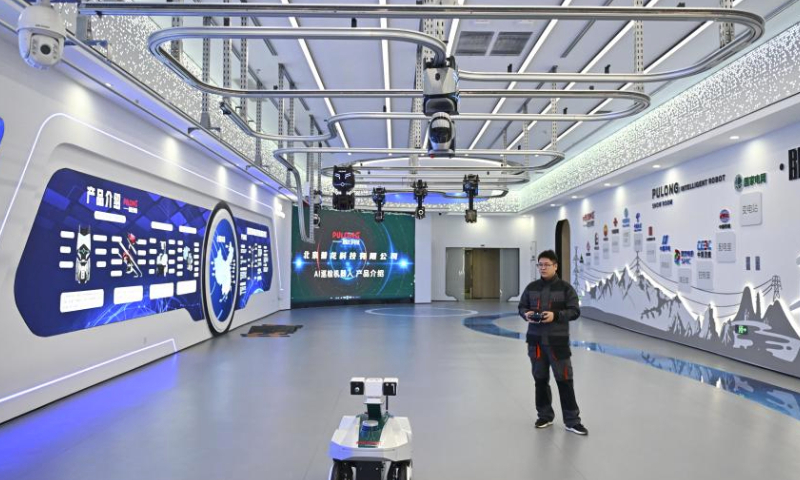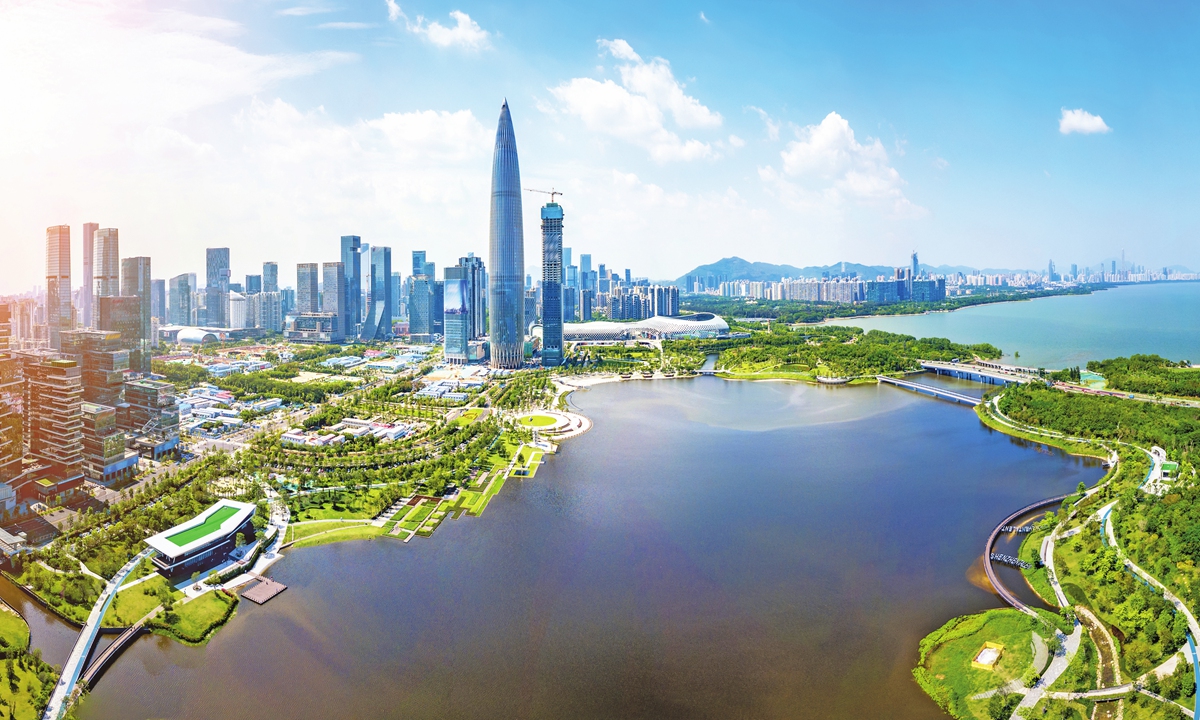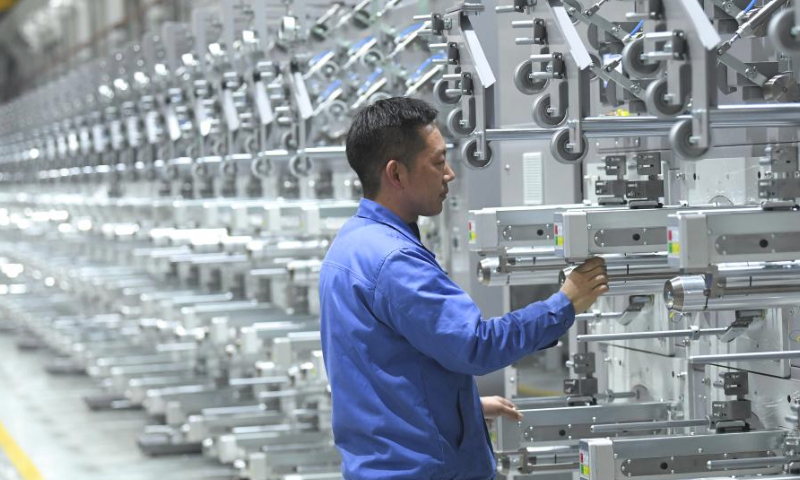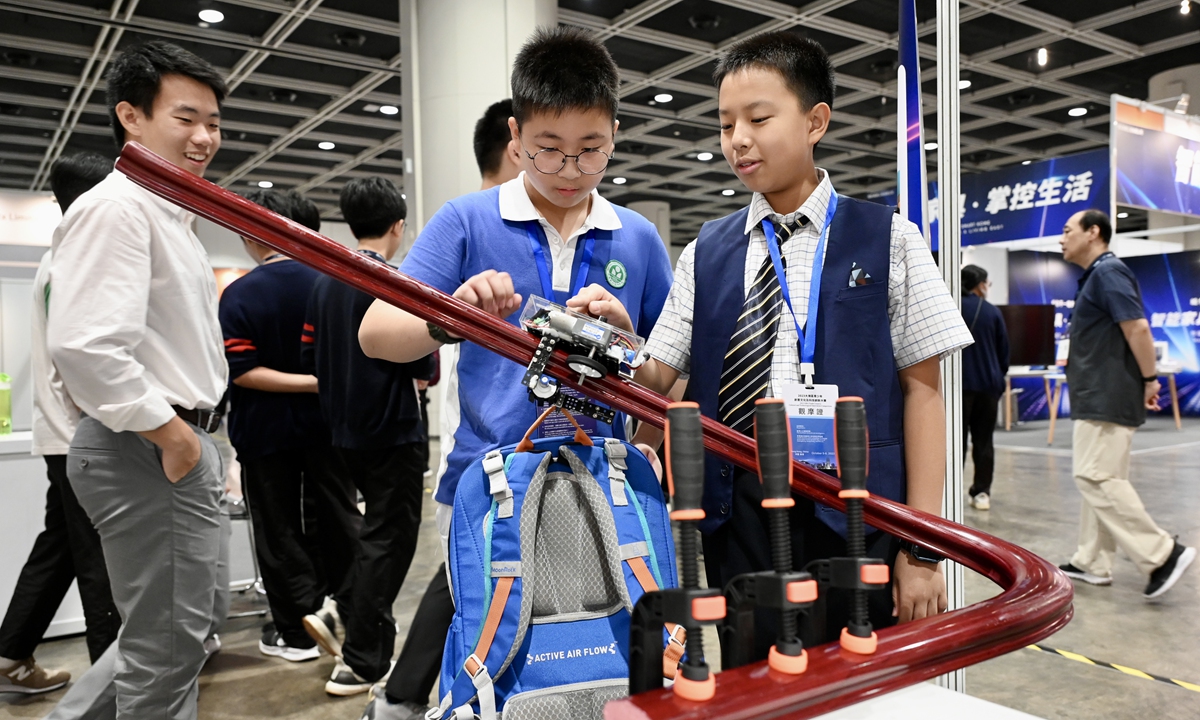China launches new original technology innovation hub construction to speed up industrial upgrades

A staff member displays an inspection robot at a test base in the Xiong'an Science and Technology Innovation Center in Xiong'an New Area, north China's Hebei Province, March 28, 2024. (Xinhua/Mu Yu)
China's State-owned Assets Supervision and Administration Commission (SASAC) of the State Council recently launched the second phase of construction for original technology innovation hubs among centrally administered enterprises, in a bid to speed up the development of industrial upgrades driven by cutting-edge technology innovation.
The move will support 40 centrally administered enterprises in establishing 52 original technology innovation hubs across 36 sectors such as quantum information, neuromorphic intelligence, and biomanufacturing, according to Xinhua News Agency.
Experts noted that state-owned enterprises possess scale and resource advantages, especially in technology research and development (R&D). The rapid progress in technological innovation by these firms serves as a pivotal driving force for fostering innovation in the private sector and propelling China's economic growth.
In the latest move, SASAC will urge central enterprises to bolster efforts in constructing innovation hubs and expedite 11 action plans to achieve original breakthroughs in fields such as quantum information, 6G, deep-sea exploration, controllable nuclear fusion, and advanced materials, Xinhua reported.
China has been vigorously pushing for its high-quality development driven by new quality productive forces, and state-owned enterprises play a crucial role in advancing this process. Amid mounting global high-tech competition, it is imperative to encourage industrial innovation through policy and investment support, Li Chang'an, a professor at the Academy of China Open Economy Studies of the University of International Business and Economics, told the Global Times on Friday.
China's central government approved a guideline in February 2022 that required state-owned enterprises to enhance their innovation capabilities, promote the deep integration of industrial and innovation chains, and establish original technology innovation hubs.
SASAC's move marked the latest progress in this ambitious initiative, following the first batch of 29 key-supported technology innovation pilot projects launched since the plan was announced.
Emerging sectors such as AI, green energy, and new business models are pivotal for enterprise growth. Some Chinese centrally administered enterprises have achieved goals in industrial chain upgrades through overall technology innovation, Zhou Lisha, research director of the Contemporary State-Owned Enterprises Institute at Tsinghua University, told the Global Times on Friday.
The favorable measures will further fuel the expansion of the emerging sectors, and serve as a key driver in meeting China's growth targets, Zhou added.
Official data shows that centrally administered enterprises completed investments totaling 2.18 trillion yuan ($301.8 billion) in strategic emerging industries last year, representing a year-on-year growth of 32.1 percent, with a slew of key projects implemented in sectors such as photovoltaic hydrogen production, carbon fiber manufacturing, and automotive chips, according to media reports.
Zhang Yuzhuo, the head of SASAC, stated during this year's two sessions in March that as of 2025, the share of revenue from strategic emerging industries of central enterprises is expected to reach 35 percent, with sophisticated strategic planning in domains including neuromorphic intelligence, quantum information, and controlled nuclear fusion.
At an on-site promotion meeting on April 28 for deepening state-owned enterprise reform, Wang Hongzhi, deputy director of SASAC, urged eligible companies to focus on key areas such as computing power and algorithms, and strive for innovation and progress, in a bid to elevate tech-driven applications to expedite tech upgrades and growth momentum transformation.



